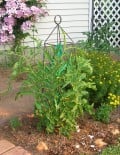How to make more tomato plants for free
Near disaster doubles the tomato harvest
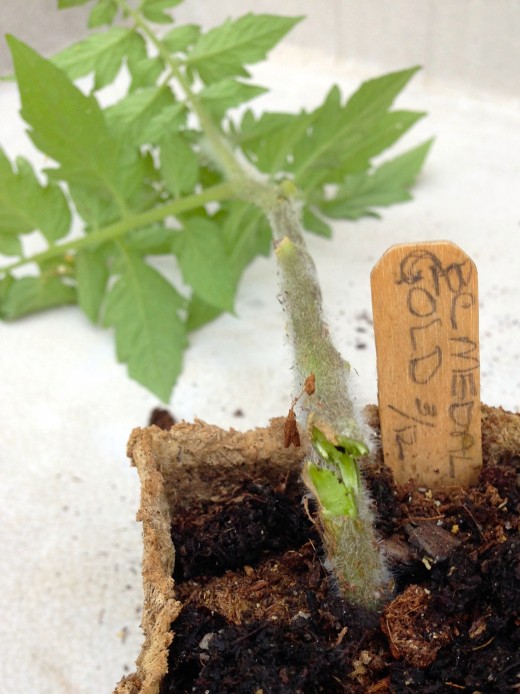
Didn't buy or plant enough tomatoes?
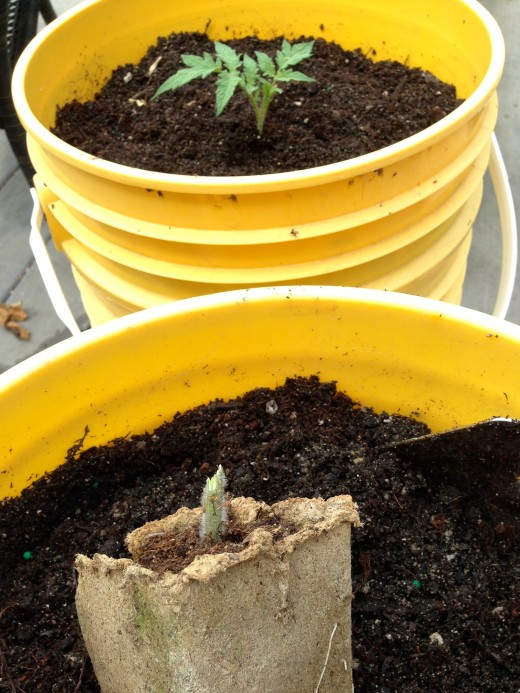
Tomato plants want to live
Make more tomato plants, don't buy them. Look what happened to my tomato plant today. Tragedy. The wind blew it off the table and it snapped at the base of the plant. No worries, now I will have two of my favorite Gold Medal heirloom tomato plants.
If the tomatoes in your garden are well established, but a big vine breaks, just stick that branch in the garden soil. Really. Trim off the lower leaves and stick it in the ground. Keep it well watered, at least twice a day.
Remember, this plant has no roots, so be generous with the water. Go ahead and stake the tomato branch like any other tomato plant in your garden. It will quickly develop roots and take off on a summertime growing spree.
Let your plant divert it's energy to developing a strong root base. Pinch of those first few blooms. The tomato plant will grow stronger, deeper roots. It will be able to handle the coming heat and drought stress better.
Water tomato plant twice daily
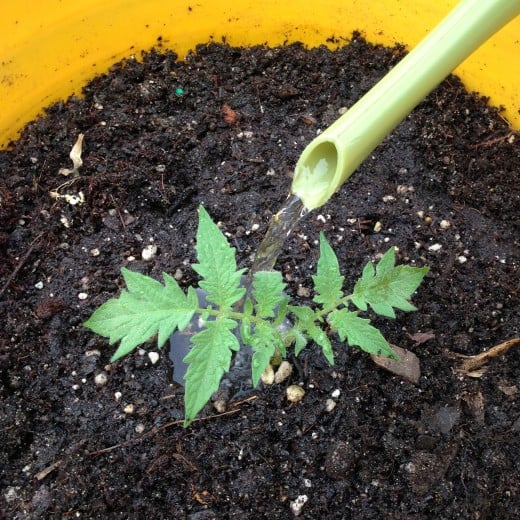
Make more tomato plants
It will probably catch up to the tomato plants you originally planted. Or, your harvest will be staggered with heavy fruit production stretched out by a couple of weeks. If you want to only eat fresh tomatoes, plan on three to five plants per person. If your goal is to enough fruit for processing, then plan on five to ten plants per person.
This technique doesn't have to be an accident. If you find extra space in the garden, prune the original tomato plant and save the larger unwieldy cuttings. Snip off the lower leaves and stick that stem in the ground right where you want that plant to grow up.
If you are producing most of your tomato plants using this method, your plants will all be the same.
Plants produced in this way will produce tomatoes exactly like the mother plant. Plan on 3 to 5 plants per person for fresh eating only. For fresh and processed tomatoes, plan on 5 to 10 plants per person.
It is OK to leave only 2 or 3 inches of the stem above ground. Roots will form all along the planted stem. It may surprise you just how fast the new plant catches up to the traditionally planted tomatoes.
Make more tomatoes
- Stick the broken vine in the soil.
- Water twice a day.
- Stake.
- Mulch.
- Voilà! 2 times the tomatoes!
Make two tomato plants from one
Remember the stubby broken base of the tomato plant? Plant that too, has a good root base. Go ahead and plant it. Soon it will regenerate a stem and leafy growth. It will probably produce tomatoes at the same rate and quality as the other tomato plants in the garden. How cool is that?
Gold Medal results
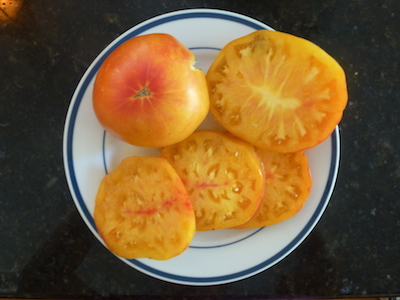
Staking tomato plants
Staking improves production and makes harvesting easier. Staked plants are less likely to pick up diseases and can handle heavier production. There are lots of methods including stakes, trellis and cages.
For a cheap and affordable method, buy 6 foot long, 1x2 wooden stakes. Cut to make pointed at on end.
Stake plants at the same time you plant the tomatoes. Place the stake 3 or 4 inches from the plant.
Tie vines loosely to the stake. Use twine or thin cotton cord, leaving extra space for tomato vine to grow. Or, use torn strips of old t-shirts and panty hose.
They should sell pantyhose in the garden department. Because this is the only good use for pantyhose. Use old or new pantyhose to loosely tie tomato plants to the stake.
If the wooden stakes are brought in for the winter, the stakes will last for years. When they finally do break, cut flat at one end and cut a point at the other. Use them for pepper plant stakes or row markers.
Clone any variety of tomato

The secret to tomato success
Mulching tomatoes
Reduce the causes of disease by mulching the tomato plants. In early summer, lightly cover the soil with a good organic mulch, like glass clippings or leaf mulch. As summer progresses, add more mulch.
Mulching is one of the best and easiest things you can do for tomato plants. The mulch will help hold ground temperature, retain water and prevent erosion. It also prevents soil from splashing on the plant, reducing the risk of soil borne disease.
Growers won't tell you about making more plants from broken vines because they make their money selling tomato plants and seeds. Fertilizer companies make money selling fertilizer, a product often used in excess. If you have good garden soil, plants won't need additional artificial fertilizers. Read Plant tomatoes the right way to learn more about good garden soil.


